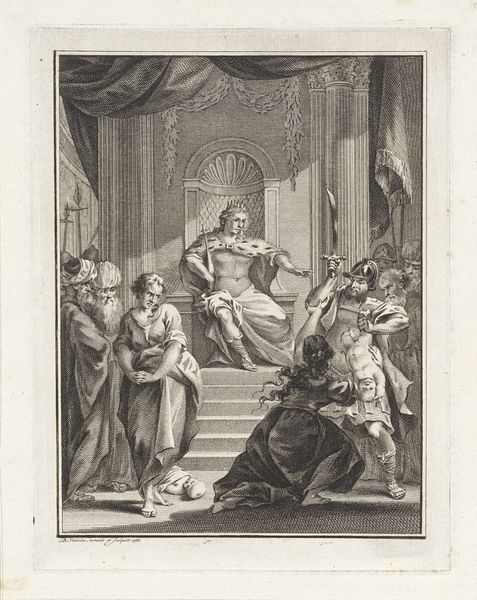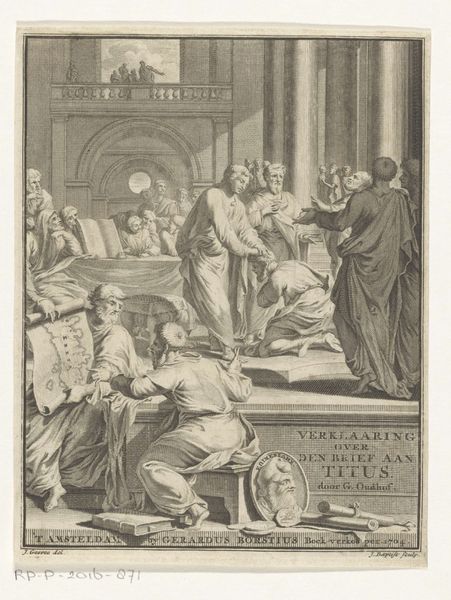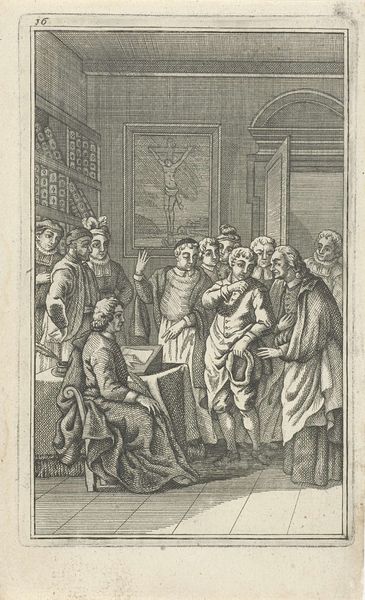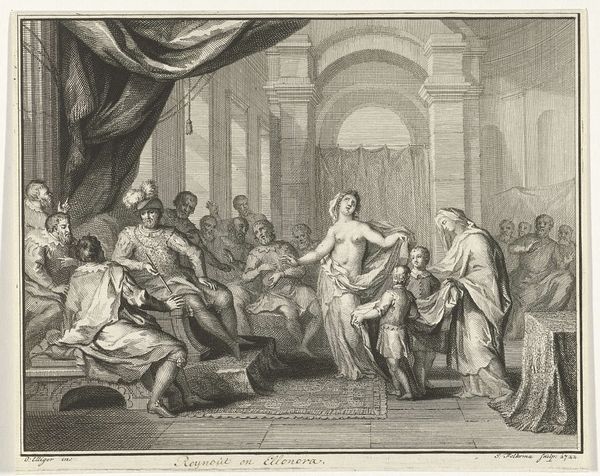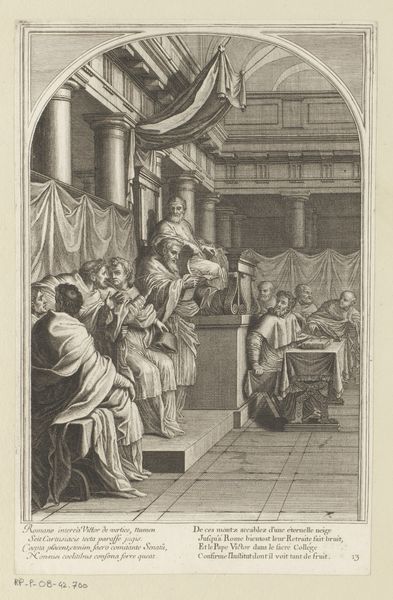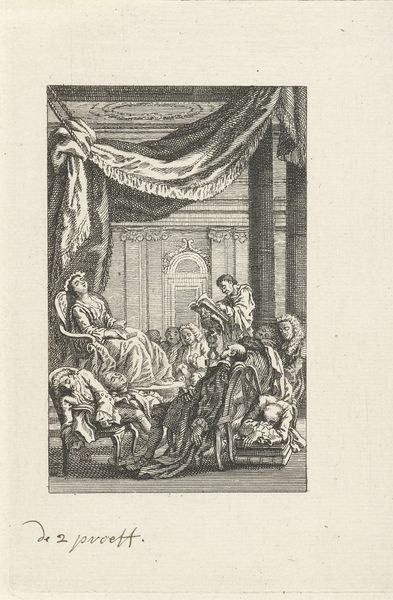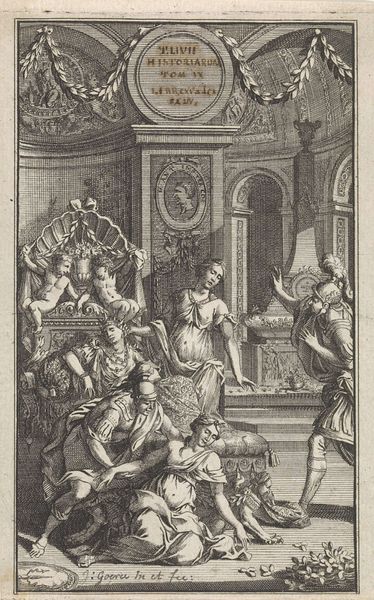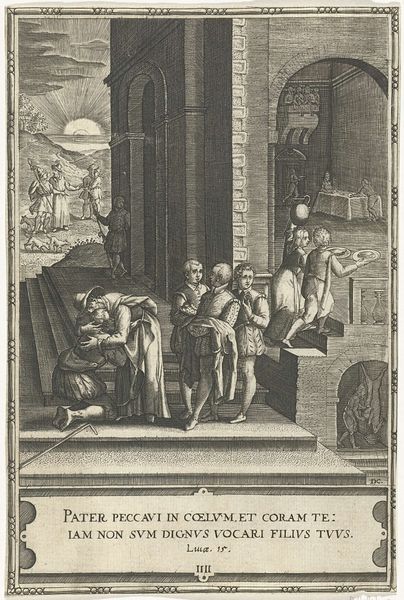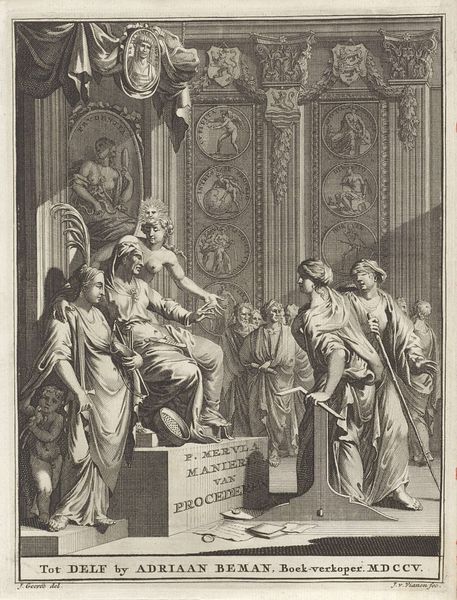
Sancho Panza wordt achtervolgd door de koks, die hem willen scheren met het afwaswater 1716 - 1761
0:00
0:00
pietertanje
Rijksmuseum
engraving
#
narrative-art
#
baroque
#
old engraving style
#
genre-painting
#
history-painting
#
engraving
Dimensions: height 212 mm, width 160 mm
Copyright: Rijks Museum: Open Domain
Editor: Here we have Pieter Tanjé's engraving, "Sancho Panza wordt achtervolgd door de koks, die hem willen scheren met het afwaswater," created sometime between 1716 and 1761. It's a lively scene! It feels almost theatrical, with all the figures and the dramatic setting. What do you make of this piece? Curator: It's fascinating to view this through the lens of 18th-century social satire. Tanjé presents an episode from "Don Quixote" not merely as illustration, but as a commentary on power and social hierarchies. Consider the opulent setting provided by the Duke: How does that physical space shape the events unfolding within it? Editor: I see what you mean. The grandeur emphasizes Sancho's vulnerability and the Duke's privilege to mock him. Curator: Precisely! This artwork's creation and dissemination occurred within a very specific artistic and socio-political milieu. Who was this work meant to serve? Tanjé and others disseminated prints widely to inform the public during the Enlightenment, therefore, could the intention be to instigate viewers to consider the dynamics of wealth and humiliation, and perhaps subtly question the elite? Editor: That makes me see it differently! The engraving becomes less about a funny story and more about societal critique. Is that a common element in art depicting "Don Quixote"? Curator: Often. The novel served as a powerful vehicle to discuss social injustices. The image gains much depth when viewed through the politics of imagery, and how art serves and is funded, presented, and viewed by its public. Editor: This has really expanded my view of the piece! What appeared to be just an illustration is really an entry point into understanding 18th-century social commentary. Curator: Exactly. And hopefully, a reminder that art is always entangled within the socio-political climate of its creation and consumption.
Comments
No comments
Be the first to comment and join the conversation on the ultimate creative platform.
